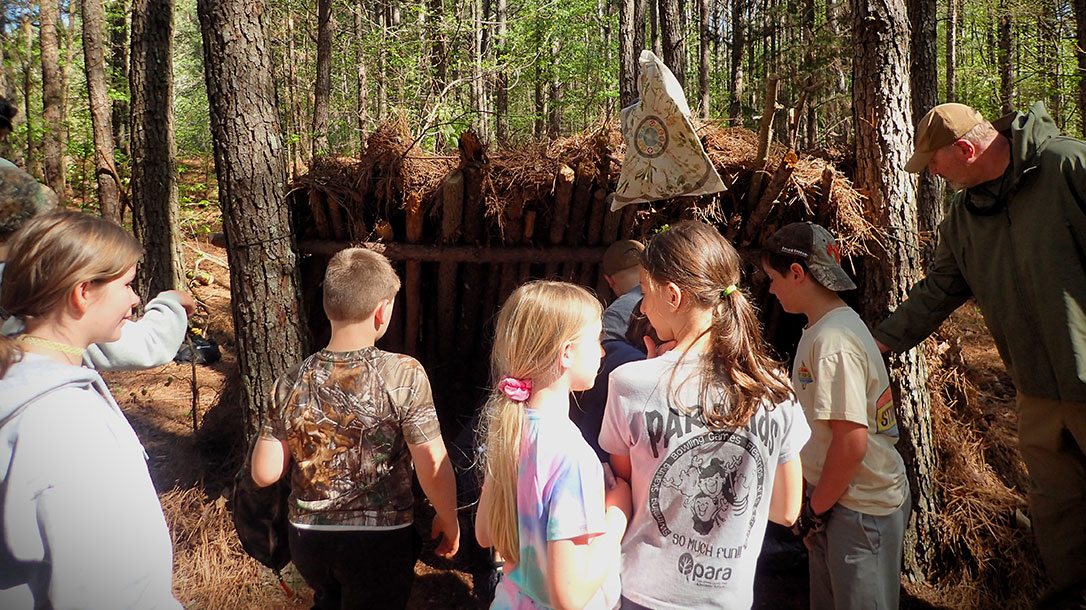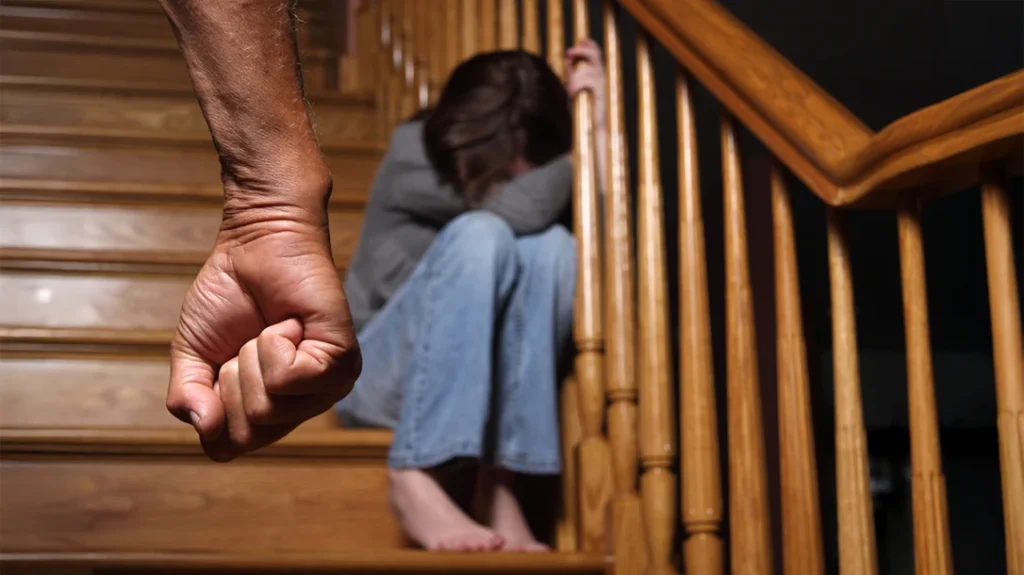Wilderness Survival training isn’t just for adults. Teaching kids wilderness survival skills at an early age lays the foundation for a lifetime of learning and exploration. This valuable skill set equips individuals with the knowledge and abilities to thrive in challenging and unpredictable situations. But who is it for? And why should it begin early? Even with kids?
Why Teaching Wilderness Survival to Kids is Important
Survival training is relevant for a wide range of people. This includes Outdoor Enthusiasts, Emergency Responders, Military Personnel, Preppers and Homesteaders, and Urban Dwellers. So, why start early with kids?
Survival training for children has several compelling reasons:
Advertisement — Continue Reading Below
- Building Resilience: Early exposure to survival skills fosters resilience. Kids learn problem-solving, adaptability, and self-reliance, which serve them well throughout life.
- Safety Awareness: Teaching kids about hazards, emergency procedures, and basic survival techniques ensures they can respond effectively in unexpected situations.
- Life-Long Habits: Skills acquired in childhood tend to stick. By instilling survival knowledge early, we equip kids with tools they’ll carry into adulthood.
- Confidence and Empowerment: Knowing how to build a fire, find edible plants, or create a shelter boosts confidence. Kids feel empowered when they can contribute to their well-being.
- Nature Connection: Survival training encourages an appreciation for the outdoors. Kids learn about ecosystems, wildlife, and environmental stewardship.
Introducing kids to wilderness survival skills at an early age promotes a deeper understanding and appreciation for nature. This early exposure sparks curiosity, leading to a lifelong passion for outdoor activities and the environment.
Furthermore, learning these skills helps children develop a strong connection with nature. Likewise, it fosters a more profound respect for the environment and a sense of responsibility toward preserving it.
Additionally, teaching kids wilderness survival skills creates opportunities for quality bonding time with family members and peers. As a result, this helps foster strong relationships and create lasting memories.
Advertisement — Continue Reading Below

Start with “Hug-a-Tree”
When getting started on what skills to teach, start with Hug-a-Tree. People tend to notice when children are missing fairly quickly. So, they must understand that staying put is their best course of action if they ever become lost.
The Hug-a-Tree and Survive program was established in honor of Jimmy Beveridge, a nine-year-old boy who went missing in southern California in 1981. Tragically, his body was discovered approximately 3 miles from where he was last seen. Search teams said they could have located him sooner if he had stayed in one place and waited.
Advertisement — Continue Reading Below
The key takeaway from the program is not just about learning survival skills. It’s about embracing the Hug-a-Tree and Survive approach.
Here are some survival training tips tailored for kids. These can be educational and fun, with extra focus on Shelter, Knife, and Fire skills.
Easy Shelter Building
Teach children how to set up basic shelters using cordage and natural materials. Hands-on shelter building is the best approach. Start by explaining what to look for when selecting a campsite for safety and comfort.
Advertisement — Continue Reading Below
A debris shelter requires few, if any, cutting tools, depending on the area and materials. A long, sturdy ridgepole must be lashed to a tree at an angle. Then, lean sticks against the ridgepole to minimize gaps.
Once the general framework is set up and explained, it’s time to gather debris. Add plenty of pine straw and debris on top of the wood structure. Soon, it will resemble a hut-like mound of insulation. Kick additional insulation inside for a good amount of insulation.

Advertisement — Continue Reading Below
Another easy shelter is a classic lean-to, which is built at shoulder height. Start by selecting a sturdy ridgepole and securing it, then layer it with wrist-thick poles found on the forest floor. A small folding saw can make the process easier, but improvising is commendable.
After laying a single course of thick poles, place smaller sticks at different angles to support the thatching using pine straw. You can fill a garbage bag with debris and dump it over the top for insulation. When the bag is filled for the last time, tie it off to create a mattress.
Since the lean-to shelter is designed to work with an open fire in front, clear all debris from the front of the shelter and mark the location of the fire with a step.
Advertisement — Continue Reading Below

Pro Tip: Poles can be cut by placing them between the crotch of a tree or where two trees are close together. Once they are inserted, apply pressure to crack the poles.
Knife Skills
Knife skills and safety go hand in hand. It’s best to teach knife skills with a project or goal in mind—like processing wood for fire. Safely teaching knife deployment, passing techniques, cutting skills, and awareness of people or pets close by is essential for safety.
Advertisement — Continue Reading Below
Knife skills also go hand in hand with fire preparation. So, making and using a baton/maul are good skills to teach.

Basic Firemaking
Teaching children about responsible firewood collection and safe fire building/extinguishing is vital for their outdoor skills. When working with younger children, it’s best to focus on the basics of fire safety rather than actual fire building. This activity involves teaching knife skills, which should be discussed, explained, demonstrated, and practiced.
Advertisement — Continue Reading Below
The one-stick fire method using dead wood can be a great way to introduce fire building. Once the students have prepared their wood, they can use a Ferro rod to experiment with various types of tinder, such as a cotton ball with Vaseline, jute twine, fatwood shavings, and feather sticks.
Starting with the easiest and progressing to more challenging materials helps build confidence. It’s important to emphasize that if a material can be lit with a Ferro rod, it can easily be lit with a lighter. With practice, everyone can develop a firm grasp of these skills.

Finding and Collecting Water
Use rain to teach kids how to collect rainwater. Show them how to use everyday items like baggies and plastic containers for water collection.
Water Purification
Explain the importance of clean drinking water and demonstrate simple purification methods, such as boiling or using purification tablets.
Build Your Survival Kit
Help kids assemble a basic survival kit with items such as a compass, fire-starting tools, an emergency blanket, a water filter, and a flashlight.
Basic First Aid
Conduct a ‘First Aid Race’ where kids learn to treat common injuries and understand the importance of first aid in survival situations.
Remember, the key is to make these activities engaging and age-appropriate. Always supervise kids, especially when learning new skills, and make learning fun.
Teaching Kids Wilderness Survival Lays a Lifelong Foundation
In summary, survival training benefits diverse groups, and starting early with kids lays a foundation for lifelong preparedness and resourcefulness. Look around for schools and programs that offer training for kids and parents—and have fun!

SIDEBAR – Don’t Forget A Whistle
Carrying a whistle in the woods is an essential safety practice. In an emergency, a whistle can be a lifesaving tool—blow it three times. Three is the universal distress call. It can be heard over long distances and help rescuers locate you more quickly than if you were yelling.
Additionally, whistles are crucial for essential signaling in the wilderness. They can communicate distress or call for help without expending as much energy as shouting. Whistles are also effective in limited visibility, such as dense forests or foggy conditions.
Overall, having a whistle on hand can make a significant difference in staying safe and being found in an emergency.
























